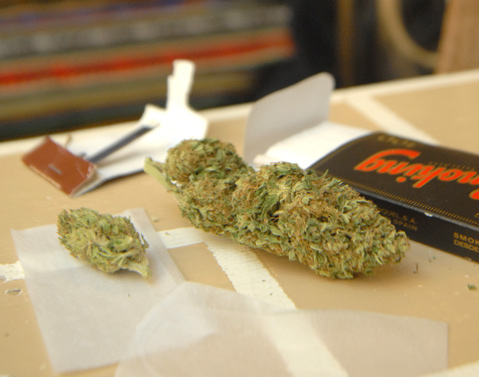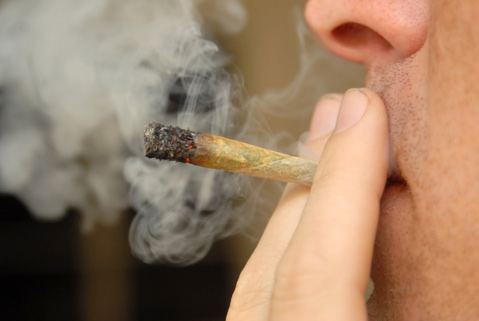Medical Pot in the Pipeline
Cities and County Adopting Laws Ahead of November Election

The City of Goleta, the City of Santa Barbara, and the county are poised to quickly adopt ordinances prohibiting commercial cultivation of medical marijuana next month to get ahead of impending statewide regulations.
In October, Governor Jerry Brown signed a package of bills — known as the Medical Marijuana Regulation and Safety Act — to govern the cultivation, transportation, and distribution of medical cannabis to qualified patients.
Among the host of rules, qualified patients will be able to grow as many marijuana plants as can fit in 100 square feet. That’s enough to produce about 140 pounds of marijuana a year, according to Santa Barbara City Attorney Ariel Calonne, with a street value of an estimated $500,000. Caregivers could grow for up to five patients.
But the state act allows cities and counties to implement their own ordinances before March 1. “I don’t trust the state,” said Goleta Councilmember Michael Bennett at a meeting two weeks ago, voicing a shared sentiment among area officials.
At that meeting, self-described patients, wearing “I am not a criminal” T-shirts, urged the council to exempt two existing collectives, Cal Green and Santa Barbara Care Center, from the proposed Goleta ban. “If it wasn’t for them, I probably wouldn’t be here today,” said one person in a wheelchair.
Goleta Councilmember Roger Aceves agreed that the two collectives have proved themselves for the past several years, and the councilmembers unanimously moved forward with the exemption, which functions as a placeholder until a more thorough ordinance is crafted. Mayor Jim Farr, who suffered a stroke last summer, abstained for personal reasons.
A quick Google search yields dozens of marijuana delivery services in the area. “We’d be silly to say it isn’t happening,” Aceves said. “It is.” To that end, the council also directed staff to set up a weed delivery registration program similar to taxicab licensing; applicants would be subject to background checks and drug testing.

Advocates have bounced between government meetings in recent months to promote the health benefits of medical marijuana. Next week, the Santa Barbara City Council will review its proposed ordinance, which bans the commercial cultivation of medical marijuana but allows personal use. In the meantime, one medical pot shop on upper State Street has been permitted, and two others in the city are going through the process; the city has an ordinance allowing up to three.
On Thursday, the city Planning Commission will hear an appeal for a pot shop at 2609 De la Vina Street. The petition was denied in November for being incomplete and because the parking lot was too far away from the entrance to the building. The appellants claim the city hearing officer was looking for any reason to deny the application at the 11th hour.
On January 19, at the county level, a similar proposed ordinance that would ban marijuana cultivation except for personal use will go before the Board of Supervisors.
Area officials, meanwhile, are looking to see if voters will approve one of the nine or so state initiatives heading to the November ballot that would legalize marijuana for recreational use. Of those, two are serious contenders, according to Dr. David Bearman, the author of Drugs Are NOT the Devil’s Tools. Bearman expressed skepticism that one initiative would muster enough votes to prevail. “It’s the same problem as in 2010, which is too much of a good thing,” he stated, adding there is a lot of similarity in all the initiatives. In addition, Bearman said, people argued the 2010 initiative was faulty and would have favored large investors at the expense of mom-and-pop growers. “There are the same issues this year,” he said.
According to the legislative analysis of one front-runner initiative, Control, Regulate and Tax Adult Use of Marijuana Act — supported by Lt. Gov. Gavin Newsom — people 21 and older could possess, transport, and give away up to 28.5 grams of marijuana and up to eight grams of concentrated cannabis. It would place a 15 percent tax on the retail sale of weed products and would allocate tens of millions of dollars in tax revenues to public universities and law enforcement agencies to research and adopt protocols to determine whether a driver is impaired.
In 2014, Colorado and Washington began to regulate the recreational use of cannabis, Bearman argued, without any “appreciable negative consequences and with a healthy boost to their economies.” But in California, Bearman said, polling indicates the approval rate for recreational use is as low as 52 percent. For medicinal use, on the other hand, it is 80 percent nationwide, he said.


